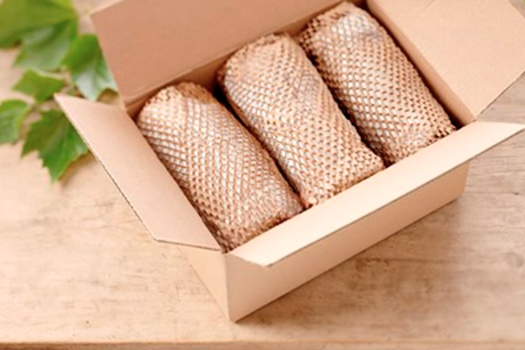In the not-too-distant future, the humble milk carton could carry a printed code, which, when scanned with a mobile phone, will direct the consumer to a website containing information on the brand, a promotion and details of the farm where the milk was produced - and maybe even the name of the cow.
The idea that consumers want to know that it was Daisy, rather than Buttercup, who has whitened their morning cuppas may be bizarre, but the technology to make it happen exists. Such codes have been hailed as one of the saviours of print and are all the rage in marketing circles. They can also be used to assist the supply chain and tap into a whole load of data that hitherto, hasn't been fully available to the masses. Take-up may be slow at the moment, but in time, printed cartons, labels and cans could be high tech and data rich.
These ‘quick response' (QR) and 2D Data Matrix codes are nothing new. In Japan they have been in use for the past 10 years. But it has been the development of viable mobile internet access that has really given them a fillip across the rest of the world; print a code on pretty much anything, from a poster to a magazine, scan it with a mobile phone and you're linked into a website.
The Japanese have had access to this technology for longer and so have stolen a march. One example comes from McDonalds; back in 2006, anyone in Japan stopping off for a burger could scan a code on the packaging and were sent nutritional information on what they're eating. The calorie count of a Happy Meal may not make for happy reading, but it did connect the brand with its consumer.
Cola codes
Another good example of codes used in conjunction with packaging comes from drinks giant Pepsi and a campaign that ran in the UK in 2008. The company placed QR codes on 400m cans and bottles. Customers took a picture of the code with their mobile phone camera, redirecting them to a WAP site. There they had the opportunity to win a raft of prizes while frequent visitors were rewarded for their loyalty with exclusive content.
The campaign's aim was designed to engage with customers in "an exciting way wherever they are". But there are other ways packaging can benefit from such codes; it can give valuable information on a product's journey all the way through to the store.
Again, Japan has led the way on this. One example has been on boxes of Kumquats. A QR code is printed on the box and consumers can upload the code and get information on everything about the farm, the way the fruit was grown and even see a photo of the farmer and his wife.
Throughout the supply chain, data is being used to track products and the signs are that this is likely to be stepped up in the UK over the coming years. Packaging giant, Chesapeake, has already developed technology designed to assist not only the traceability of an item, but also give consumers more information on a product.
Called Pro-tex, the technology was initially developed to fight counterfeiting. The system uses a unique alpha-numeric code to help verify the authenticity of a product; it reveals whether the product it's attached to has been sold previously. This can then be checked by text message against a secure database. Last month the company announced that this was being expanded to enable brands to deliver product and promotional information to their customers.
This development allows consumers to register the code via mobile phone and the manufacturer can interact directly with the customer. It gives marketers an additional option as well as help manufacturers build information on a product's distribution, life cycle and market data.
For Vlad Sljapic, European sales director for digital printing solutions at Domino, QR codes have the potential to pack even more data into a small square of print. "The benefit is that you are able to see exactly where the stock is in the production chain," he says. "Currently it's not possible to trace that kind of information all the way back."
The time is now
Sljapic believes that developments in inkjet technology, alongside the release of more advanced mobile handsets, mean that now is the time for technology to become a bigger part of people's lives. He adds that practically all the inkjet printers and devices in Domino's range can print these codes. Many can be attached in-line to presses or the code can be printed onto the item of packaging at the end of a run.
"It's a classic case of bridging print and the web," explains Sljapic. "By printing variable codes you are effectively defining each and every product. It can also allow you to trace products in another country and open up opportunities in regions that a brand hadn't spotted before."
However, he does point to one drawback, although it's not a problem with the technology. For it to work, every part of the supply chain needs to be singing from the same hymn sheet. The sticking point could be the supermarkets' parsimony. "The question is will the supermarkets make the investment? [Even though] I don't believe it's a significant investment," adds Sljapic.
If anything it's logistical: every part of the supply chain needs to be involved and that includes packaging printers. t Benson Group managing director Mark Kerridge notes that digital print has yet to really make a significant impact in the printing of items such as cartons, although with labels it's more cost-effective. And for printing codes, inkjet devices may not cost the earth but there needs to be the necessary demand from customers: unless it's been pushed by the brands and manufacturers themselves there's not much point in investing in an inkjet device that's going to be sat idle at the end of a press.
"[But] we continue to watch digital printing technology and its developments with interest," adds Kerridge.
And at the moment that's where the sector is at with these printed codes. However, the signs are that this will change; Chesapeake's Pro-tex product points to immediate promise in the short term while brands are likely to latch on to the marketing possibilities. The hardware investment isn't prohibitive either: Domino's Sljapic says that prices for inkjet kit can start from around £6,000.
If brands, retailers and suppliers can get their heads together, then QR and 2D Data Matrix symbols could unlock massive data-driven potential for all parties. Most importantly it could offer consumers a chance to know more about where the product they've just purchased comes from.
OVERVIEW: QR CODES
? A QR code is a matrix code (or two-dimensional bar code) created by Japanese corporation Denso Wave in 1994. The QR is derived from Quick Response, as the creator intended the code to allow its contents to be decoded at high speed
? The use of the QR code is free of any license. The QR Code is clearly defined and published as an ISO standard. Denso Wave owns the patent rights on QR Code, but has chosen not to exercise them
? QR codes are common in Japan, where they are currently the most popular type of two dimensional codes. This is largely driven by the fact that most Japanese mobile phones can read this code with their built-in cameras. Campaigns are also starting to break into the UK
? The codes are not just restricted to URLs or PURLs, although they are the most common information. You can also encode phone numbers, text response numbers, geographical tags and contact details
Source: Domino Printing Sciences
TIMELINE
January
Amcor sold two of its Spanish plants as part of its bid for Rio Tinto’s Alcan Packaging business. The sale was a condition of European Commission approval for the deal
February
Smurfit Kappa was in talks over a deal to buy Mondi’s UK corrugated sites. The bid would result in Smurfit Kappa buying Mondi’s Bux, March and Mold sites while Mondi would buy Smurfit Kappa’s sack converting operations
Spanish corrugated company SAICA confirmed it would be going ahead with its £290m recycled paper mill project in Manchester
April
More household names signed up to the second part of the Courtauld Commitment designed to reduce grocery packaging and waste. Major brands joining included Nestlé, Unilever, Heinz and Boots
Chesapeake bought an eight-colour Heidelberg Speedmaster XL 105, its third press in two months. The packaging giant didn’t rule out further press investments
June
Nampak’s Leeds business swung back into profit in the first six months of the year posting a profit of £320,000. Meanwhile Nampak Europe revealed plans to build a new factory in Germany for the pharmaceutical carton market









